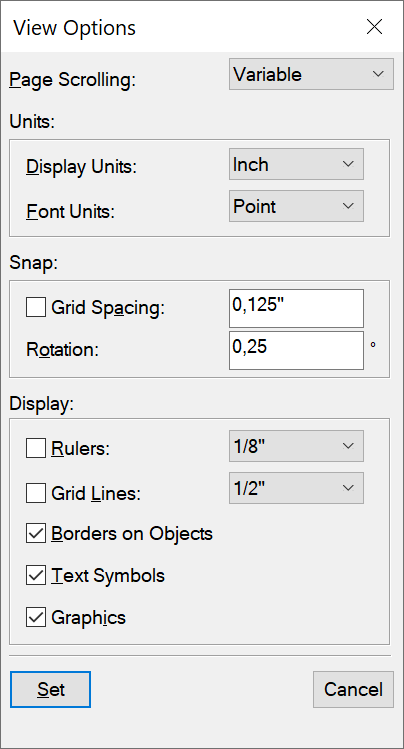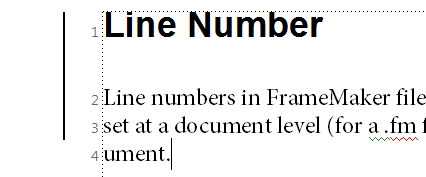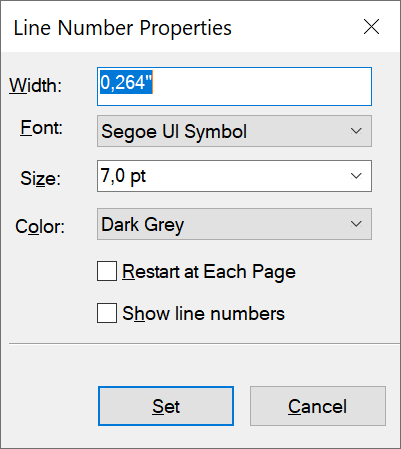Learn about the different viewing and display options in Adobe FrameMaker.
View Options
In Adobe FrameMaker, some text boxes in dialogs require a unit of measurement (such as points or inches) for the value you enter.
You can specify the default units for font size and line spacing (font size units) and for other measurements (display units) in the View Options dialog.
The default units of measurement appear after the values in the text boxes of dialogs.
You can enter short and long forms of units in text boxes of dialogs:
- pc, pi, or pica for picas
- pt or point for points
- px for pixels
- dd for didots
- cc or cicero for ciceros
- Q for Q units (refers to font size and line spacing for the Japanese language only).
If you enter a value without a unit of measurement in such text boyes, FrameMaker uses the default unit.
If you enter a value with a unit different from the default unit defined in the View Options, FrameMaker automatically recalculates the value into the default value. For example, if your document display units are picas and you want to set a paragraph indent of 1 inch, enter 1" in the First Indent box of the Paragraph Designer. When you click Apply, the measurement changes to the number of picas that corresponds to 1 inch.
Choose to open the View Options dialog.

Display Units
Choose the values for Display Units. You can select between the following default units:
- cm (centimeters)
- mm (millimeters)
- Inch
- Pica
- Point
- Didot
- Cicero
- Pixel
Click Set.
Font Units
Choose the values for Font Units. You can select between the following default units:
- Point
- Q (for Japanese only)
Click Set.
Rulers and Grid Lines
Select a setting from the Rulers dropdown and the Grid Lines dropdown.
Click Set.
Line numbers
Choose to display/hide line numbers.
Line numbers in FrameMaker files help you identify particular lines of content. Line numbers are set at a document level (for a .fm file) and appear before each inserted line in a FrameMaker document.

Some highlights of line numbers
Support for multicolumn and multiflow formats: For files with multicolumn formats, line numbers appear for text in each of the columns. For multiflow documents, the line numbers are calculated according to the text flows and continue accordingly.
Recalculation: When you insert text within a paragraph with line numbers are enabled, the line numbers are recalculated to accommodate the new text.
Document level property: Line numbers are a document level property, so you can enable/disable this feature for a document (.fm file). Line numbers can be set at a document level to continue from previous page or restart at each page.
Text flows: For multiflow documents, the line numbers follow the text flows and continue according to the text flows.
XML documents: Line numbers do not persist in XML documents. However, you can enable line numbers in the application template.
Printing: Line numbers are visible in the print and PDF created using Save As PDF.
While using line numbers and change bars, ensure that they do not overlap.
To display line numbers, do the following:
Choose . The Line Number Properties dialog is displayed:
Figure 3. Line Number properties dialog
In the Line Number Properties dialog, select Show line numbers and specify the following:
Width: Distance of line numbers from the column. The distance is relative to the columns that contain text.
Font: Font of the line numbers.
Size: Size of the line numbers.
Color: Color of the line numbers.
Restart at Each Page: Selecting this option restarts line numbers for each page.
Show Line Numbers: Selecting this option displays the line numbers.
Click Set.
Visual guides
You can show several of these visual guides in a document window:
Borders around text frames, graphic frames, and imported objects
Markers, paragraph mark (¶), and other symbols in running text
Rulers along the top and left side of the window
You can also show a grid of horizontal and vertical lines for drawing, resizing, and aligning graphics. All visual guides are non-printing, so you do not need to hide them when you print. Make the appropriate document window or book window active.
Do the following:
To show or hide borders, choose .
To show or hide the rulers, choose .
To show or hide grid lines, choose .
To show the element boundaries, choose or Element Boundaries (As Tags) in Structured FrameMaker. FrameMaker automatically toggles these two options.
Text symbols
To show or hide the text symbols, choose .
Text symbol |
Meaning |
|---|---|
¶ |
End of paragraph |
§ |
End of flow and end of table cell |
|
Tab |
|
Anchored frame and table anchor |
|
Marker |
|
Forced return |
| |
Manual equation alignment point |
|
Non-breaking space |
|
Discretionary hyphen |
|
Suppress hyphenation |
Subset of menu commands
You can display a subset of menu commands called quick menus. The quick menus do not have commands for formatting text, editing some aspects of graphics, and inserting some objects such as markers and variables.
If you do not see the full set of menu commands, the quick menus is probably displayed.
To display quick menus, choose .
To restore the complete menu, choose .
To customize menus, add, move, or remove menus and commands as described in the online manual Customizing FrameMaker on the Adobe website www.adobe.com/go/lr_FrameMaker_support_en.
High-contrast workspace
Adobe FrameMaker uses system colors to draw window backgrounds, text, and other graphics. Users who have trouble discerning colors or variations in contrast, or who have low visual acuity, can set high-contrast color schemes and custom text and background colors. This setting makes the information in the user interface easier to view.
To configure the accessibility options in Windows, set the Accessibility options in Windows Control Panel.
Faster page display
To display pages faster:
Open the document by bypassing the update of imported graphics, cross-references, and text insets. Opening a document without updating references makes a document open faster but can slow down the display of individual pages.
Turn off the display of graphics by choosing . Deselecting the Graphics option. Click Set.
Important: If you deselect the Graphics option and generate a PDF, the graphics do not appear in the PDF.Display small text as gray bars by choosing . Enter a point size in the Greek Screen Text Smaller box. Click Set. Whenever text in your document is in a point size smaller than the size you specified, it appears on the screen as a gray bar.